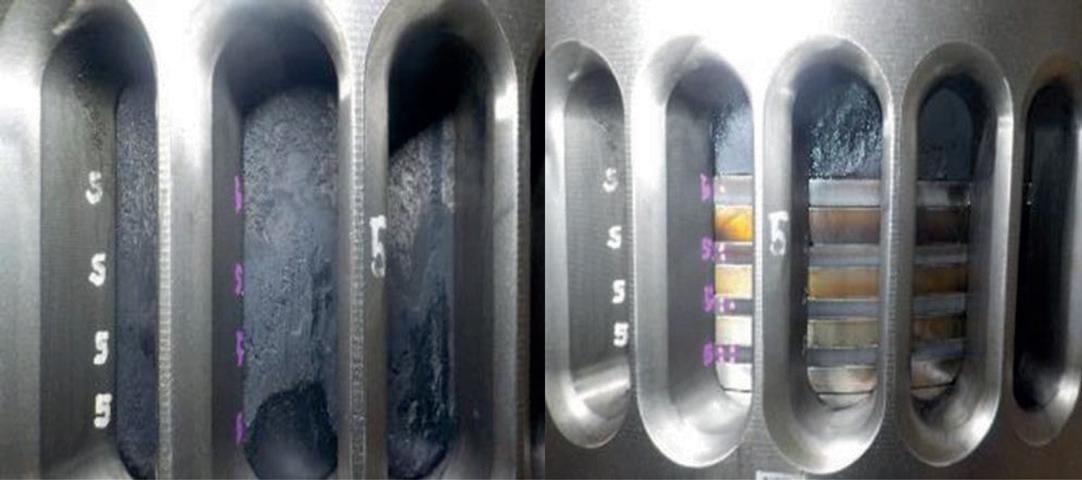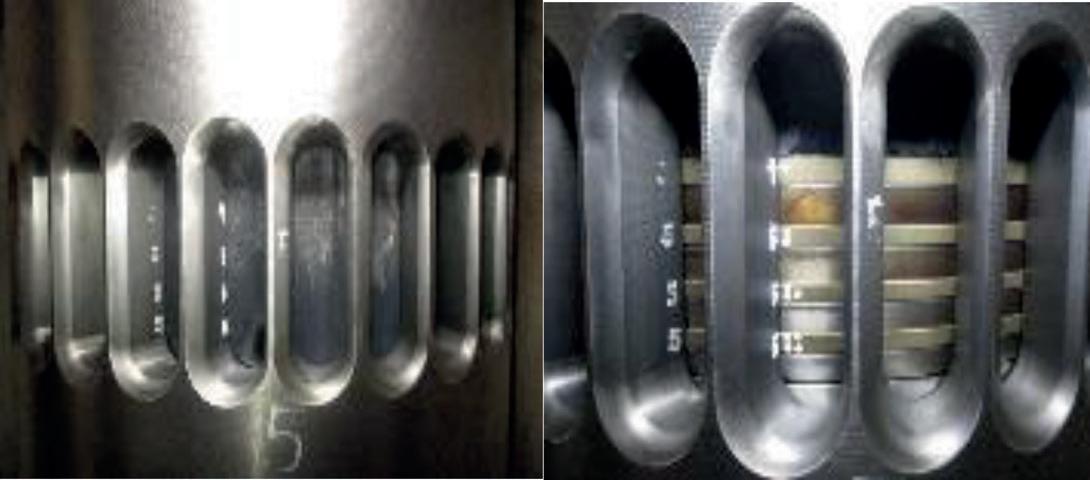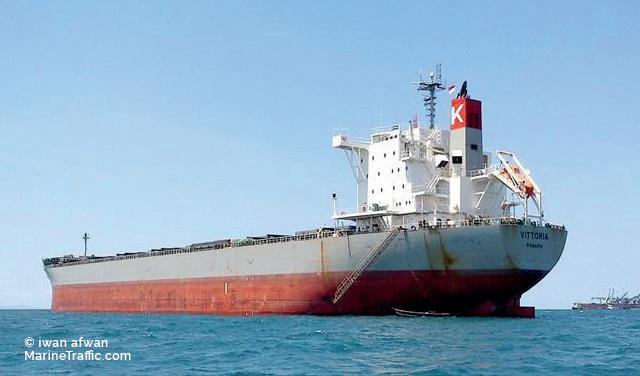
10 minute read
Feed Rate Case Study
LESS CAN BE MORE: OPTIMISING FEED RATES WITH CONDITION
Rasmus Mandrup Jeppesen, AfterSales Manager at Hans Jensen Lubricators discusses the reduction of lube oil consumption to 0.5g/kWh on two K-Line bulkers
Given the importance of cylinder lubrication for the reliable operation of 2-stoke marine engines, it is unsurprising how much attention lube oil consumption receives from many shipowners and fleet managers. K-Line Bulk Shipping UK is no exception and has since 2019 been using HJ Lubtronic 2.0 SIP (Swirl Injection Principle) as their main engine lubricator. This system allows for an optimum cylinder condition compared to a standard cylinder lubricator, which was key elements for the company.
Since December 2020, K-Line has been working closely with the Aftersales & Service department at Hans Jensen Lubricators in order to find the optimum balance between having a low consumption of lube oil combined with good cylinder conditions. The aim of the project was to reduce the feed rate to 0.50 g/kWh, from around 0.9 g/kWh, using a BN 70 Lube Oil only. This corresponds to a reduction of daily consumption from 97 litres to 47 litres, which is equivalent to a daily saving of more than US$100.
Hans Jensen Lubricators has extensive experience in supplying advanced cylinder lubrication systems gained over the last century. The conditions the equipment faces in the harsh environments on board a vessel require planned maintenance as well as a crew that fully understands how to operate and make the most of the possibilities of our cylinder lubrication system. Through good cooperation the above can be controlled in a superior manner.
The marine engineers within Hans Jensen Lubricators’ Aftersales department understand the importance of delivering consistently high performing lubrication systems. Several of the engineers have sailing experience. The team has numerous references where superior pe formance has been achieved, with specific guidance on attaining low feed rate with good cylinder conditions, and prompt follow-up.
Preparation and prior training
Before project startup, K-Line opted for specify a training webinar, which was attended by both vessel staff and office staff. The purpose of such a webinar was to familiarise both crew and superintendents of the lubrication system including countermeasures to take in different scenarios. Furthermore, the webinar offered instructions about which parameters can have an impact on cylinder conditions and how to evaluate them.
The webinar was well received and has been used for training and familiarisation for the crew. It is believed that this activity has contributed significantly to the success of the project success and efficiency of implementation.
Project background
The shipowner selected two bulk carriers, powered by 6-cylinder MAN B&W S50MC-C and S60MC-C main movers respectively, for the project.
Technological aspects
Important parameters to take in to account when undertaking a project like this are: Vessel Names Albion Bay / Vittoria
Year of Build 2011 / 2013
Vessel type
Engine type Bulk Carrier
6S50MC-C / 6S60MC-C
2020 Compliance Low Sulphur <0,5 % S
CLO BN Navigo 70 MCL AW
Parameter Description
Feed rate [g/kWh] Main parameter for optimization project
Cylinder oil in use
Daily consumption of
cylinder oil [L/24h] Main parameter for a single BN oil in use
Used for visualizing savings of
the feed rate reduction
Port Inspection Report - PIR For evaluation of cylinder conditions
Scrape Down Analysis – SDA For evaluation of cylinder conditions
- On board
- Laboratory tested
Fuel type / fuel report
Purifier performance report
Shop test report For evaluation of cylinder condition with regards to cat fines For evaluation of cylinder condition with regards to cat fines Used for comparison for collected data
Main Engine performance test For evaluation on engines performance with regards to cylinder conditions
Maintenance history for: Used for evaluation of cylinder condition for proper recommendations
- Liners
- Pistons
- Piston rings
Liner wear records Used for comparison for the effect of the implementations of the feed rate reduction
By evaluating the data before the beginning of the project, the team will be able to focus on the aspects of the lubrication system that are affecting the cylinder conditions. In turn, this offers pointers as to where the team should focus during the cylinder condition optimisation process.
“In our experience, over lubrication is quite often a contributor to sub-optimal cylinder conditions, despite common perceptions to the contrary,”. Rasmus Mandrup
“In our experience, over lubrication is quite often a contributor to sub-optimal ‘‘ cylinder conditions, despite common perceptions to the contrary,” Rasmus Mandrup Jeppesen, AfterSales Manager at Hans Jensen Lubricators told The Motorship
Jeppesen, AfterSales Manager at Hans Jensen Lubricators told The Motorship.
“It is a common response to turn up feed rates when issues occur with cylinders and liners. Man times, we’ve seen that lowering feed rates actually enhance cylinder conditions and reduce maintenance requirements.” A good place to start is to help get this point across so crew members understand the dynamics behind it.
Project timeline and Methodology
The plan is based on a progressive 5-step feed rate reduction programme to be carried out over a 7-week period, with a minimum of 100 running hours between each reduction. The project timeline was tailored to fit the specific vessels’ operating profile, taking into account the vessels’schedule and the duration of port stays.
The process towards an optimal balance between feed rate and cylinder condition follows Hans Jensen Lubricators’ ‘SL920166 How to succeed with SIP’ service letter. In this publication, it is clearly described how to establish an index point, optimize feed rate and finally conclude that an optimum has been reached. 100 running hours in each phase is chosen because each adjustment needs time to settle in the system before an evaluation of sufficient quality can be made, in order to conclude if further reduction is possible.
Index point / starting point
Starting up a project like this where primary focus is to lower the feed rate, a well-documented index point is of utmost importance. For that, a thorough analysis of Port/piston conditions, oil sample analysis, liner measurements and the current condition of the lubrication system are conducted.
For the vessels in question a target feed rate of 0.5 g/kWh was set. While the feed rate target included a margin for iterative improvements, it was based on the supplier’s prior experience gained with similar vessels.
Optimization process
The optimization process is an iterative evaluation of cylinder condition based on port inspections and Scrape Down Analyses. These confirm the cylinder condition and indicate readiness to go for the next step. Each Scrape Down Analysis is made into a thorough report by the Aftersales Service Department at Hans Jensen Lubricators – a so-called Feed Rate Optimization Programme “FROP”. With reduction steps of 0.05 g/kWh, every 100 running hours, it has been possible to reduce the feed rate continually, together with the thorough FROP, to the target feed rate of 0.50 g/kWh.
Cooperation
Throughout the project, close cooperation between Hans Jensen Lubricators and K-Line was maintained. Hans Jensen Lubricators technicians observed the progress of the
8 The Vittoria
(pictured) was mostly operating in the Pacifi c basin during the project.

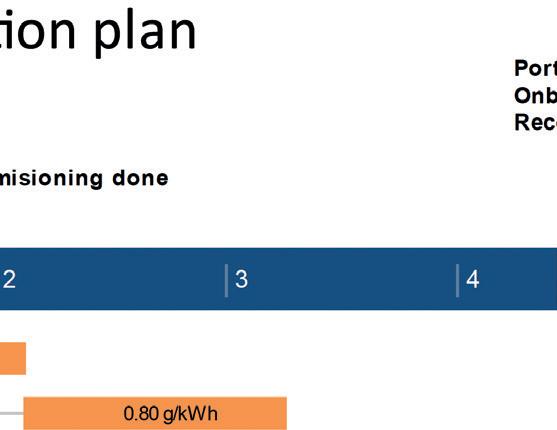
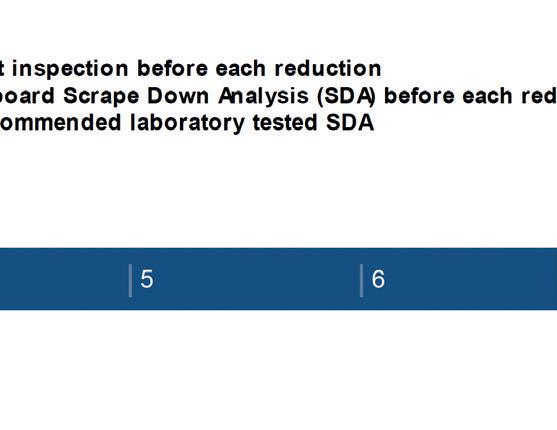
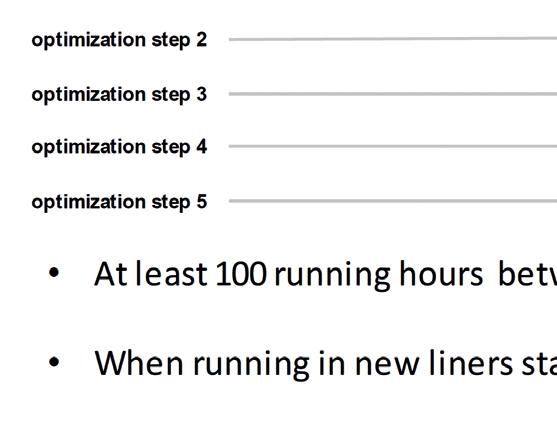
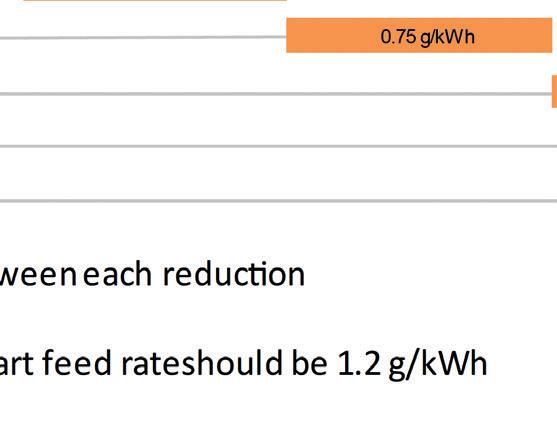
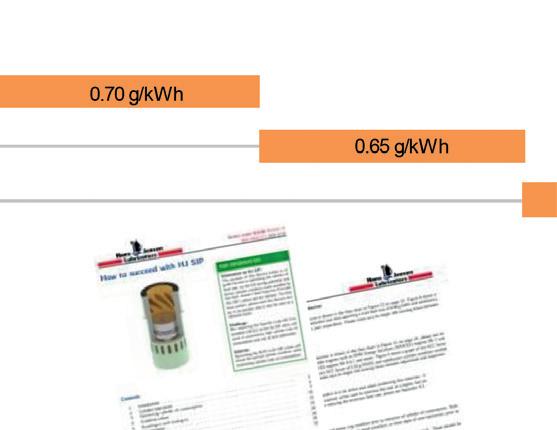
Albion Bay - Lubtronic 2.0 SIP - development F/R
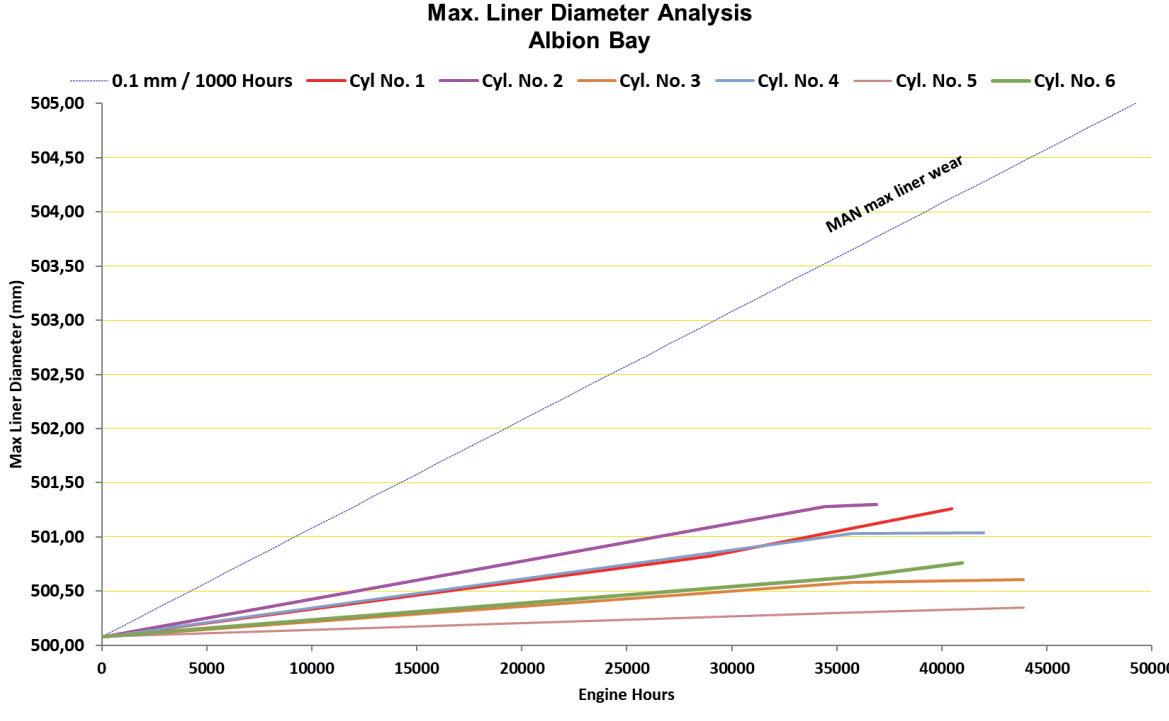
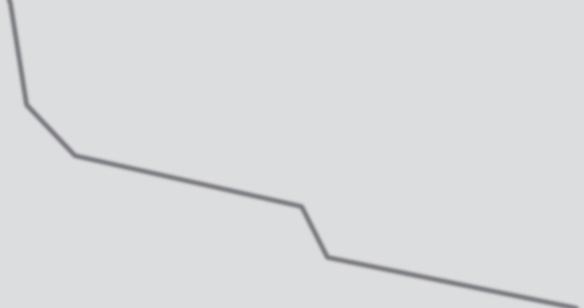
Throughout the reduction project, cylinder condition evaluation was performed regulary. One of these evaluations was Iron content. Scrape down samples was taken onboard and tested both onboard and in laboratory. Throughout the project the iron content never exceeded 50 mg/kg.
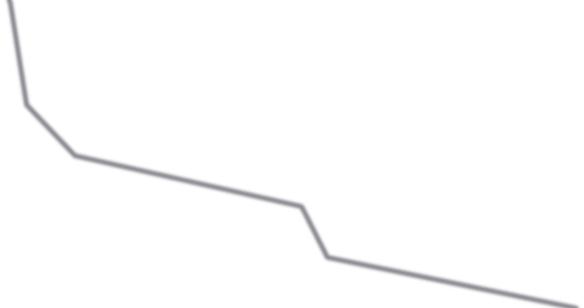
0,8
0,75
0,7
0,65
0,6
Feed rate [g/kWh]
Feed rate 0,55
0,5
0,029/1000 h 0,033/1000 h 0,012/1000 h 0,023/1000 h 0,006/1000 h 0,017/1000 h
vessels on a daily basis in close contact with the K-Line superintendents. K-Line’s General Manager, Mr. Georgi Yorgakiev, commented: “Your advice to our superintendents throughout the project has been invaluable.”
Underlining the productive cooperation between the teams, the HJ lead technician for the project praised the close working relationship: ”Throughout this project good communication and understanding has been key for the success. Technical superintendents and HJ technical support have been in close contact from day one. Thorough guidelines have been provided by HJL and implemented by vessels accordingly, any uncertainties or doubts has been thoroughly discussed so all involved parties have been confident with the implementation steps. It has been a delight working with K-Line, which has shown a high level of commitment for the project.”
Scrape down analysis
Throughout the project, as the feed rate was gradually reduced, it was found that iron content (FE) [ppm] remained below 50 ppm which indicates low abrasive wear – Iron is appearing in scrape down samples when abrasive wear is present in the cylinder. Normal range for this when using HJ SIP valves is 0-250 ppm.
Another important parameter to follow is the residual BN [mg KOH/g]. The BN in the cylinder oil is used as a detergent for cleaning the cylinder. When excessive amounts of BN is present in a cylinder this can lead to calcium deposits build up on pistons and around piston rings.
Referring to the above graphs, an onboard scrape down was taken between each feed rate reduction. Furthermore laboratory tested scrape down analysis was carried out several times through the project.
The development showed that the iron content never exceeded 50 mg/kg, even though the feed rate was reduced. As feed rate is reduced the concentration of the oil samples get more concentrated. The more concentrated the oil samples are, it can be expected that wear particles in the scrape down oil can be higher. However, throughout the project period, the wear particles amount remained below 50 mg/kg. This is a strong indication that less abrasive wear is present in the cylinders. Furthermore, as feed rate was reduced the residual BN content became higher. This is also due to the fact that concentration in the sample was getting higher. Under normal circumstances, a high residual BN can lead to deposit build up on the pistons and around the piston rings. However, we found that deposits were decreasing and cylinder condition was improving throughout the project as the feed rate was reduced,” Jeppesen said.
The low iron content is supported by liner measurements which were taken throughout the project.
Port inspections
Port inspections has been carried out by crew at each port where time allowed it.
Before project start the cylinder conditions were evaluated as being acceptable with room for improvement:
After each step of reduction evaluations were made by scrape down analysis and port inspection. This showed a steady improvement of the cylinder conditions.
After the last reduction was implemented cylinder condition had shown much improvement:
Calcium deposits has decreased and pistons and piston rings are looking very good.
Project Conclusion
Apart from achieving an all-time low in terms of lube oil consumption, it has been possible for the vessels to use one type of cylinder oil only. The reduction plan was presented for the vessels and adjusted according to feedback. Besides the two vessels that have been part of this project, K-Line has nine other vessels with similar system setup.
K-Line has now seen in practice how to manage the reduction of feed rate while ensuring good cylinder condition, partly through the training webinar and partly through the project. K-Line intends to apply the methodology used in this project to the rest of the fleet.
8 Left: Above
pictures taken 16-09-2020 before project startup at feed rate 1.00 g/ kWh. Right: Above pictures taken 2406-2021 after last reduction with feed rate 0.50 g/kWh
